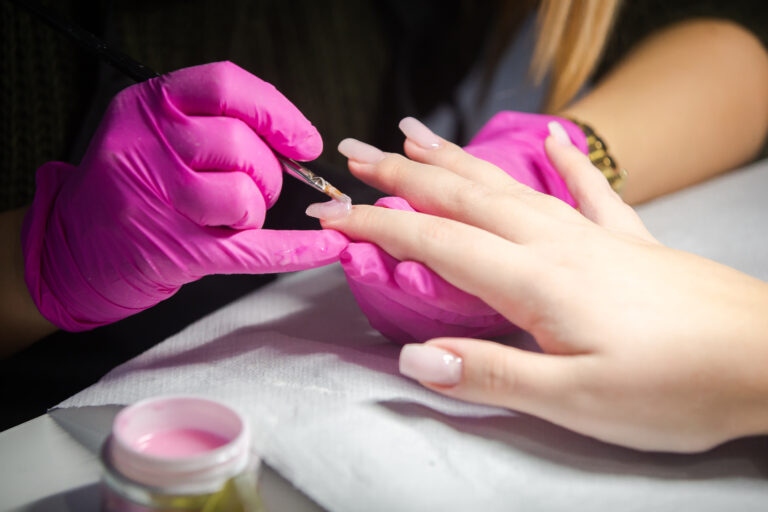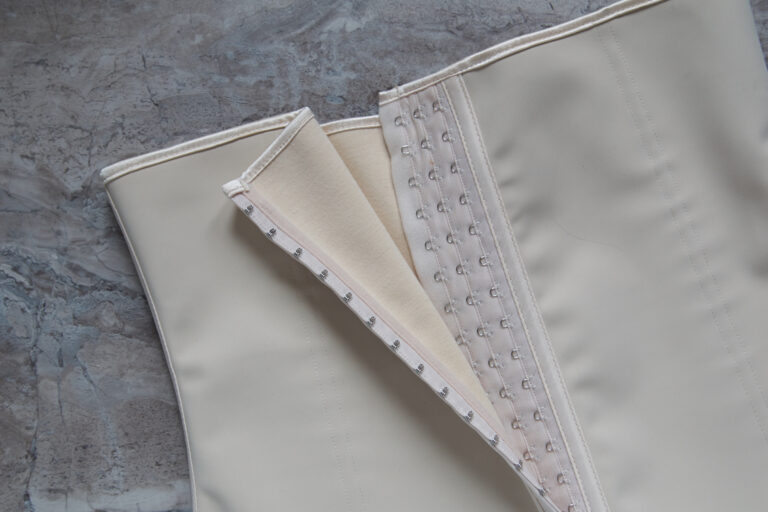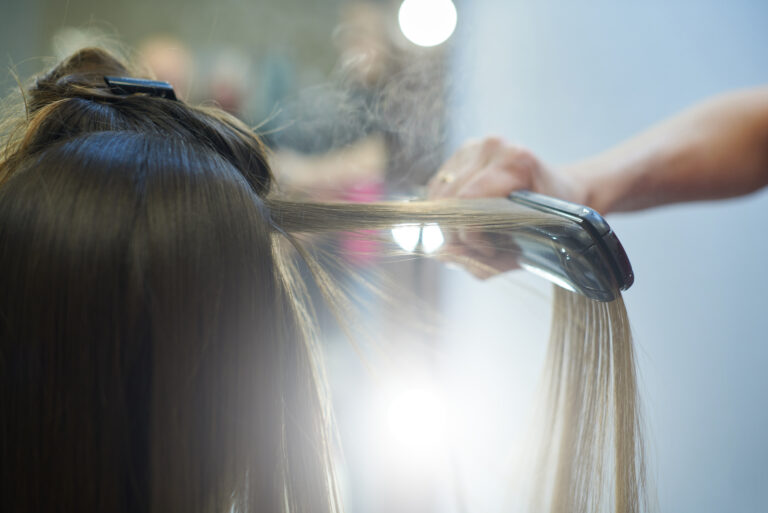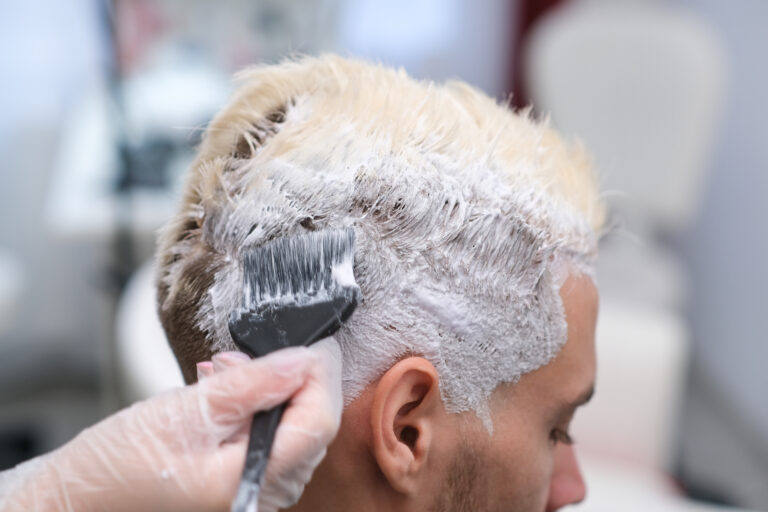Women go to great lengths for beauty. Regular salon appointments for a hair colour touch-up or a manicure are all good and well to begin with, but when do these treatments become unsafe? Usually, they start to promise an unattainable figure or glossy, luscious hair at the expense of your health.
8 popular beauty treatments that are more dangerous than you think
1. Ear candling
The practice of ear candling involves inserting a wax-coated hollow tube into the ear. Once the candle is in the ear canal, it's lit on fire and burned for about 15 minutes. Those who have done the procedure say that the candle creates a low-level suction force that pulls wax and foreign debris out of your ear. Others say it leaves you with a ‘clean head’, and clears out your ear canal.
Marketers of ear candles advertise them as a remedy for tinnitus, earaches, sinus infections and any cold or flu symptoms.
In response to the claims, a study in 2017 found that there was no suction whatsoever during a candling procedure. It doesn't even ‘melt’ the wax either, as some have claimed because the candle does not reach a high enough temperature.
There are no proven homeopathic benefits to ear candling – at best, it's a lousy way to attempt to clean your ears. At worst, it can do serious damage to your ear, especially if a hot candle is so close to your face.
Leave the candles for the birthday cake, and instead try a few drops of water, hydrogen peroxide, or over-the-counter ear drops. Let it sit in your ears for a few minutes, then tilt your head to let the liquid and wax slide out.
2. Manicures and pedicures
While the occasional mani-pedi with your friends is an excellent way to pamper yourselves, you should be aware of the health risks.
Gel manicures and UV nail driers
Avoid making frequent visits to the nail salon if they use UVA light to dry your nails instead of ye old fan. Even though this is primarily used for gel manicures we’d still opt out or go for a regular polish manicure instead. Even though this can take longer, the UVA light can damage the DNA in skin cells and increase your risk of skin cancer. Alternatively, use the fan or just go polish-free.
Drying nail polish, especially gel polish, with UVA light is common in salons. However, repetitive exposure to UVA light can put you at risk of developing skin cancer. A recent study found that the radiation emitted by UV nail polish driers can damage the DNA in your skin cells. It caused mutations in these cells that could potentially lead to skin cancer. Despite the findings, its author emphasized that the study does not prove UV nail lamps cause cancer.
Still, exercise caution if you absolutely must get a gel manicure. If you have a higher sensitivity to UV light or any type of cancer in your family history, we strongly recommend opting for a regular polish instead.
Infections
Going to an unreliable nail tech can irritate your skin or give you an infection, especially with all the vapours and dust floating around. If you’re around the salon for long periods (or if you work in the same building as the salon), exercise caution and understand you might be at risk of developing an infection.
Infections can be caused by staph, yeast, and fungi, which is why nail salons must follow high cleanliness standards. This means sterilising equipment and sanitising between clients. Don't be afraid to ask about their sanitisation process to protect yourself from infection.
Nail damage
Other types of manicures, like acrylics, can also cause damage to your nails. When you get acrylic nails removed, the nail tech needs to file down your real nails and use chemical removers like acetone. Even though acetone alone isn't going to damage your nails beyond repair, it can result in nail thinning and cracking if you’re consistently getting acrylics put on and taken off. They aren't known to cause any serious, long-term issues though.

Keeping your nails safe
While there’s nothing inherently unsafe about getting a mani-pedi, you should still be aware of the risks.
- Be wary of cheap mani-pedis and practices that don't sterilise their equipment often
- Give your nails a break by only going a few times a year rather than every other week
- Ask for an alternative UV dryer if possible
- Go to a reputable nail salon (and ensure they have proper ventilation systems in place)
- Ask about the sanitisation/sterilisation routine (e.g. files should be single-use and any other instruments sterilised before use on a new client)
- Reschedule your appointment if you have any cuts, wounds, or scratches on your hands or feet
- If you notice any discolouration or pain/swelling around the nail beds, consult with your dermatologist
3. Waist trainers
If you’re a woman who uses the internet, you’ve likely seen or heard about waist trainers. Endorsed by celebrities and influencers on social media, waist trainers promise a voluptuous hourglass figure. Even though they look great while worn, you should realise they can be risky to your health when worn for extended periods.
Some believe it's possible to ‘train’ your waist into retaining a slim figure, while others suggest that it can aid in weight loss if worn while working out. Even though waist trainers can give you immediate results, that Kim Kardashian-esque body won’t last. You can’t reduce your body fat percentage with a waist trainer, and you should not rely on it to help you reach your weight loss goals.
How do they work?
Waist trainers work similarly to a girdle or corset. The idea is that the material will place pressure on the stomach giving you a small, tight waist. Waist trainers are typically made of a few different materials – hard or thick fabrics like neoprene, as well as hooks, velcro, or lacing to hold the trainer in place.
There’s a reason that corsets fell out of fashion. They’re extremely uncomfortable, and there are major health concerns when they’re worn for an extended period.

The dangers
Difficulty breathing
A 2018 study found that wearing a waist trainer caused breathing difficulties like shortness of breath, sweating, and increased pain while exercising. The American Board of Cosmetic Surgery (ABCS) also estimated that waist trainers can reduce lung capacity by 30 and 60 per cent, depending on how tight it is and how long you wear it.
Wearing a waist trainer makes it harder for your body to get the oxygen it needs to thrive. When you exercise, extra strain is placed on your body. In response to the extra demand, it needs more oxygen. If your body doesn't have enough, you'll end up feeling tired, dizzy, short of breath, or you could faint.
Weakened muscles
Waist trainers provide the support that would typically come from regularly training your core muscles. If you fail to train your core outside of using a waist trainer, you could end up with weak, atrophied muscles.
After giving birth, some women turn to waist trainers to help them lose weight. However, there are currently no studies to prove that waist trainers used postpartum help with weight loss. If you wear a waist trainer while your muscles and organs are trying to heal, it can do more harm than good, increasing the time your body needs to recover.
Organ damage
Compressing your stomach with continual force is going to cause some damage to your internal organs. It might cause your liver, kidneys, and bladder to shift into unnatural positions, reduce blood flow, or affect how well they can function. In some cases, you could also end up with permanently damaged organs.
What about shapewear?
If you want to feel confident in a skin-tight dress, shapewear is a much better option. Unlike shapewear, waist trainers are meant to be worn regularly and tightened after each session to achieve that permanent hourglass shape. Shapewear is flexible and made with materials that will not damage your soft tissue or organs and can give you the hourglass figure you associate with waist trainers without damaging your health.
4. Brazilian Blowouts and keratin treatments
It's easy to understand the appeal of the Brazilian Blowout treatment. The ability to transform any hair type into luscious, hydrated shiny hair? Sign me up. But this treatment isn’t all it's made out to be.
The Brazilian Blowout is a branded type of keratin treatment that uses the chemical formaldehyde to achieve that desirable smoothing effect. Not only can this chemical cause side effects and allergic reactions, but it’s a human carcinogen, meaning it can cause cancer.
Formaldehyde is a key ingredient in keratin treatments because it helps chemically repair damaged hair. The stylist will usually coat your hair with the product, then add heat from a blow dryer to bind it to your hair strands. As the product is heated, formaldehyde is released into the air as visible, strong-smelling gumes.
Even though formaldehyde is used in lots of things we encounter daily, like paints, medicine, and cosmetics, it is usually only found in small amounts.
The increased popularity of the treatment invited scrutiny from regulatory bodies in the U.S. that say exposure to the chemical in salons is far beyond safe. This is especially true for salon workers, who are more likely to suffer the symptoms by completing multiple treatments a day as opposed to those who come in two or three times a year.
Formaldehyde can irritate your skin, eyes, nose and throat, and can cause cancer if you or other salon workers are exposed in high amounts for long periods of time.
In March 2021, the FDA issued a women’s health alert, asking women to reconsider hair treatments that use formaldehyde. Almost 20 years prior, formaldehyde was classified as a human carcinogen, proving that exposure over time can lead to cancer.

Symptoms of formaldehyde exposure
According to the National Cancer Institute, formaldehyde exposure can cause some serious side effects. These include:
- Watery eyes
- Burning in eyes, nose and throat
- Chest pain
- Coughing
- Wheezing
- Nausea
- Dizziness
- Skin irritation
Even though the effects of a Brazilian Blowout are attractive, we’d recommend opting for a natural hair treatment instead. Even though it's not a quick fix, natural moisturisers like coconut and argan oil can deep condition your hair, leaving you with smooth, silky hair over time. We’d also recommend surveying your options and asking your stylist for a formaldehyde-free treatment. There are formaldehyde-free keratin treatments on the market, but you should always check with a salon professional before booking.
5. Tans
Australia has one of the highest rates of skin cancer in the world. About 2,000 Aussies die from skin cancer each year, and more than two in three will be diagnosed with skin cancer at some point in their lifetime. In short, tanning is a form of skin damage. The more your skin is exposed to UV radiation, the more melanin it produces, giving your skin a darkened, ‘tanned’ effect.
There is a strong link between tanning and skin cancer. Using a tanning bed or solarium before you reach 20 years old increases your risk of developing basal cell carcinoma, squamous cell carcinoma, and melanoma by 47%. These types of skin cancers accounted for one-quarter of all cancer-related hospitalisations between 2014 and 2015. Remember that ad that was all over Aussie screens in the 2000s? No tan is a safe tan.
Tanning beds
Some say that because tanning machines use mostly UVA light, it’s safer than exposing yourself to the UV rays of the sun. This is incorrect – UVA light doesn't only cause skin ageing, but it penetrates the skin deeper than UVB rays and is still strongly linked to the development of skin cancer.
In fact, solariums emit harmful levels of UV radiation that contribute to photoaging, acute sunburn and blistering, and an increased skin cancer risk. Thankfully, tanning beds and solariums are banned for commercial use in all Australian states and territories.
The best way to protect yourself against skin cancer is to avoid tanning entirely. Alternatively, consider products like spray-on tans or creams that won’t increase your risk of skin cancer in exchange for that bronze, tanned look. Keep in mind that when using a self-tanner, you still need to wear broad-spectrum sunscreen (SPF 30 or higher for the most protection!).

6. Hair bleaching
If you’ve ever dyed your hair a lighter colour, you probably know how badly bleach can harm your hair. Bleaching damages the hair cuticle and internal structures of the hair by removing its natural proteins. While it can leave your hair dry, damaged, and prone to breaking, there’s a bigger health issue with bleach than you might realise.
If not done by an experienced professional, bleaching can leave you dealing with some pretty nasty side effects.
Bleaching products contain chemicals like hydrogen peroxide, persulfates, and alkalising agents that can cause chemical burns on your scalp. Most of the time they’re located close to the surface of the skin. In some cases though, they can penetrate deeper, necessitating hospitalisation. Scalp burns are likely to occur after using powerful bleaching agents, heat styling tools too soon after bleaching, and prolonged exposure to bleaching products.
To reduce the incidence of chemical burns, always ensure your hair is bleached by an experienced professional, or you might find yourself dealing with:
- Mild to severe pain
- Blistering
- Skin swelling and redness
Another risk of bleach products is hair bleach poisoning, wherein you have a reaction to the chemicals in hair bleach. This situation is made even worse if you happen to get any in your eyes or on your skin.
- Diarrhoea
- Abdominal pain
- Low blood pressure
- Slurred speech
- Burning in the throat or eyes
If you experience any of the above, request medical assistance immediately and wash your eyes out with water for at least 15 minutes.
Bleaching drastically weakens your hair strands – before you try it, consider if your hair is healthy enough for it. Reconsider if you need to have that hair colour, and if you’re happy putting yourself at risk for it.

7. Laser hair removal
Laser hair removal procedures use a concentrated beam of light to target the cells responsible for hair growth. This light is converted into heat and passed through the skin to the hair follicles. Once the heat gets to about 70 degrees, the hair follicles can be destroyed.
Like any medical procedure, laser hair removal has risks. Fortunately, they’re minor. After your session, you might find the treated area to be itchy, bumpy, inflamed or red. However, this is normal and should subside after a few days.
The most dangerous part of laser hair removal procedures is the side effects that could arise. If your treatment is done by an inexperienced or uncertified provider, you could be left with severe complications and potentially permanent side effects. These include:
- Skin damage
- Scars, blisters, crusting
- Change in your skin’s colour and texture
- Greying hair
We’d recommend avoiding spas or salons that allow nonmedical personnel to conduct laser hair removal treatments. That being said, these side effects can also present themself if you fail to adhere to your doctor or dermatologist’s pre and post-treatment recommendations.
8. Botox and fillers
Botox is the name of a specific brand of drug made from the toxin botulinum. When injected, it temporarily weakens or paralyses the muscles to reduce dynamic wrinkles, which appear when expressing emotion (think frown lines and crow’s feet). Aside from cosmetic purposes, it can also correct underlying muscular issues like hyperhidrosis (excessive sweating), teeth grinding, and chronic migraines.
On the other hand, dermal fillers or soft tissue fillers are injected beneath the skin to plump up thin lips, reduce static wrinkles, and fill in or soften areas of the face.
Even though The Therapeutic Goods Administration (TGA) considers Botox to be safe, there are still some possible side effects you should be on the lookout for:
- Weakness or paralysis of muscles near the injection site
- Bleeding, bruising, and numbness at the injection site
- Rashes, itching
- Drooping of the brow or eyelid
- Blurry vision
- Flu-like symptoms
Like Botox, fillers are generally safe, but you should be aware of any side effects that could present after your session.
- Brushing, bleeding, or swelling at the injection site
- Itching and redness
- Bluish skin discolouration
- Acne-like bumps under the skin
The most important way you can reduce the possibility of complications when receiving a cosmetic injection is by making sure you go to a qualified and reputable cosmetic nurse or healthcare professional who is trained in the proper use of fillers and Botox so you can reduce your likelihood of any complications occurring.
Anyone who performs a cosmetic injection, whether that's a dermatologist or a doctor, should have the required training, experience, and knowledge to do it safely. Qualified healthcare professionals understand that even though they’re minimally invasive, cosmetic procedures are still procedures.
Botox and fillers are safest when they've been injected by a professional.
